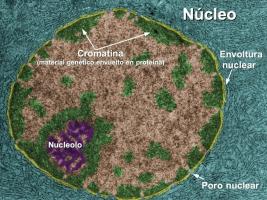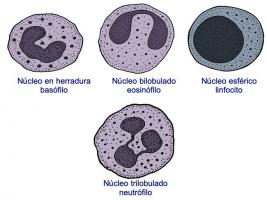Structure of an argumentative text with examples of the parts
The structure of an argumentative text consists mainly of three parts: the introduction, the argument and the conclusion.
The introduction it reveals the topic of the text and the author's thesis, that is, the position he adopts in front of a topic that generates conflicting opinions.
The argumentation is the set of reasons on which the author supports his position, the credibility of his claims is paramount to convince the interlocutor.
The argumentative text always derives in a conclusion that synthesizes the ideas contained in the arguments and encourages the reader to consider the position defended.
| Introduction | Argumentation | Conclution |
|---|---|---|
|
|
|
The structure of argumentative texts is flexible, since the number of parts that make it up and their arrangement can vary.
Attending to the place that the thesis occupies, we can find different types of structure, the most used is the framed structure, although there are other structures such as deductive, inductive or parallel.
Argumentative texts, therefore, serve to convince, express and defend an opinion through Arguments should make clear the author's position and the reasons he relies on to maintain it.
Below we will explain in depth each of the parts of an argumentative text.
Introduction: the topic and thesis
It is the presentation of the topic and is usually done in the first paragraph of the text.
Through a story, an anecdote or other information, the thesis is presented with the intention of drawing the reader's attention.
The theme of an argumentative text is the general subject on which it deals, the thesis is the opinion, the position that one has regarding the subject.
A topic example could be “Air traffic and climate change”, because it raises the issue in a general way.
A proposal for thesis would “The inappropriate and excessive use of air transport favors climate change”, because it reveals a subjective view of the matter by the author.
Argumentation: developing arguments and refuting objections
It also receives the name of development, it is the central body of the text where the arguments and objections are collected.
The thesis is based on a central argument from which other arguments are born that justify it. There are different types of arguments, such as statistical data, causality arguments, examples, generalization, analogy or arguments from authority.
Within the argumentation, the counterargumentation is also carried out, that is, the presentation of the objections that may arise and their refutation. It is about refuting the grounds expressed against the thesis so that the argument becomes solid.
The use of verbatim quotes from specialists in the field is recurrent to reinforce the arguments and give authority to the writing.
Thus, in the argumentation, critical reasoning is carried out for or against the proposed topic.
Argument Examples that support the proposed thesis would be:
"The airlines maintain flights en route with empty planes so as not to lose their rights at the airports of large capitals"
"Private flights generate in four hours the same emissions as a person for a whole year."
What objection example we could claim:
"According to the Paris Agreement, there is an action plan to introduce sustainable fuels for means of air transport".
A way of refute, that is, to deny that objection, it would be for example:
"Sustainable fuels are made from vegetable oils and their plantations have negative consequences for biodiversity and the local economy".
In this way we refute the arguments that arise against the thesis and we reinforce it.
Conclusion: synthesis, reinforcement and exhortation
Also known as closing, it is the final part of the text and its purpose is to recapitulate, contribute conclusions that confirm and reinforce the argument and encourage the reader to reflect on the topic treaty.
A conclusion example would "taking into account the inefficient use of these transport systems and the amount of emissions they generate, it is clear that they contribute to climate change".
Below we will see in full the text that has served as an example in each of the parts.
Argumentative essay example
Topic: Air traffic and climate change
Air transport has become the fastest, most efficient and safest method, both for the transport of people on commercial flights, and for the transport of goods. But all the time that we save in these operations, are we losing it in years of life of our planet? The answer is undoubtedly yes, since andhe inappropriate and excessive use of air transport contributes to climate change.
When I speak of inappropriate use, I mean the empty flights that airlines are forced to maintain to comply with the clauses imposed by large capital airports so as not to lose their rights. The emission generated by these flights can reach two million tons of greenhouse gases.
On the other hand, heThe pollution generated by private flights is much higher to that emitted by a commercial flight, since in four hours it generates the same emissions as a person for a whole year.
The expected response to deny my arguments is to resort to the measures established by the Paris Agreement, according to which there is a action plan to introduce sustainable fuels for means of air transport. The adoption of these measures would allow carrying out journeys that do not generate CO₂ emissions.
Faced with this observation, I limit myself to defending my position by claiming that sustainable fuels are made from vegetable oils, the plantations of which have negative consequences for biodiversity and the local economy. This is because, in order to carry out the cultivation of these species, the native species must be eliminated.
Taking into account the inefficient use, the amount of emissions they generate and the effects that the manufacture of sustainable fuels causes on biodiversity, it remains latent that air transport systems contribute to climate change.
See also:
- Types of texts.
- Literary text and non-literary text.
References:
- Cordoba, m. T. G., Bastidas, L. AND. R., & Bravo, R. R. (2020). Inferential reading of the argumentative text. Didactics of the construction of the reader, 115.
- Moreno-Fontalvo, V. J. (2020). Practices in the teaching of academic argumentative writing. The text structure. University Education, 13(2), 11-20.
- Pardo, J. F. P., & Velasquez, J. m. b. (2001). The argumentative structure: basis for the understanding and production of scientific and argumentative texts.
- Westton, A. (1994). the argumentation keys. Barcelona. Ariel.



